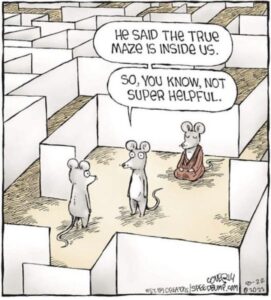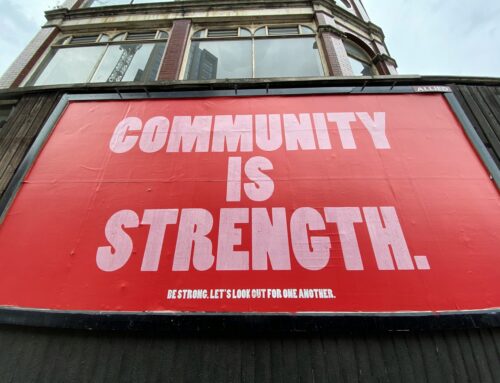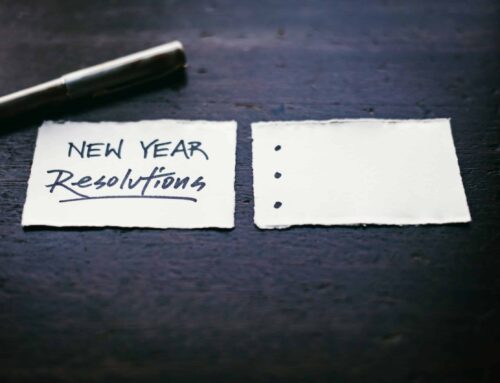Welcome to 2023, everyone! I hope your holiday season was full of warmth, safety, and celebration. We’re here, on the other side of it, and with any luck, your life is allowing a little more time to focus on your personal well-being. In last month’s blog, I brought up the notion of mindfulness, and the way that the modern portrayal of it can put pressure on us. Be peaceful! Be grounded! Be different than you are! Right now!
I discussed how mindfulness is not about getting anything; it’s about looking inward at what is already there. In today’s blog we’ll ask an important question: why? Why should we bother with mindfulness?
To answer that question, I’m going to use another word: Mindtraining.
If we were going to climb a mountain, we would train, right? Most people agree that it would be unwise to just head up the side of a mountain wearing flip-flops and carrying nothing but car keys and a cell phone. We’d have equipment and water and we would train physically for weeks ahead of time. We’d prepare in every way we needed so that we had a successful, safe adventure that we could look back on and feel good about.
Training our minds is exactly the same: we prepare in small, manageable ways so that we can better cope when real life challenges arise. We don’t expect ourselves to be able to lift five hundred pounds with no training, so how come we expect ourselves to be able to be the masters of our own emotions without training?
Whether your 500 pound life event looks like frustration at work, dismay over a relationship, internal self-blame, or an upsetting argument with a family member, mindfulness is a way to live our lives with awareness; a way to step into our own existence with intention and responsibility. A way to not feel at the mercy of the external (or internal) forces we encounter every day. It’s a practice, and a path. One that offers the opportunity of greater satisfaction (and yes, inner peace!).
So! How do we train?
I’ll start with two bits of advice.
- Start small (no 500 pound challenges to start with, please)!
- Remember curiosity.
After that, we can follow Tara Brach’s RAIN protocol I mentioned last month:
R- Recognize what’s going on
A- Allow the experience to be there, just as it is
I- Investigate with interest and care (this is where curiosity comes in!)
N- Nurture with self-compassion
The next time someone cuts you off in traffic, take a moment to see what happens inside. Are you angry? Frightened? Experiencing an internal tirade about how that other person should be different? Stressed about the appointment you’re late for?
Perfect! This is a 10 pound opportunity to train with. This means turning your attention away from what the other driver is/should be doing, and turning toward your internal experience. If you’re angry/scared/stressed, what’s behind that? What is feeling vulnerable and threatened there? It’s ok if you’re not sure; just stay with it. Keep your curiosity directed internally. Can you hold those emotions with compassion? Can you leave judgment and critique out of it?
It’s way easier to stop at the R. “I recognize that I’m angry!” But instead of going straight to “I’m angry because that guy drives like a jerk,” or “Oh, I shouldn’t be angry, I should let it go,” move on to the A of allowing. Allow that anger to exist, and then move on to the I of investigation. What’s underneath that anger? Sadness because you’re weary of feeling pushed around by others? Anxiety because you’re on your way somewhere important? Are your emotions fried because of other stressors? Look deep! There’s almost always another layer to discover if we’re curious about it.
And lastly, there’s the N of nurturing with self-compassion. Breathe into the deeper layers. Breathe into the sadness, the stress, the frustration. It’s ok. Those feelings are there, they’re real, and they’re working through your body, heart, and mind. Dismissing them leaves them humming in your nervous system. Nurturing them allows them to exist, then eventually pass. Can you stay with that process? Can you feel those emotions wax and wane?
Congratulations! That’s mindfulness!
Of course, there’s “in the moment” mindfulness, and there’s also structured meditation practice. Both have the same purpose. Both are intentional, dedicated, and train the mind to follow a steady path, both in times of peace and times of distress.
If either becomes a practice for you, and if you practice them with regularity, friendliness, and dedication in small instances, you can go into those bigger, heavier moments in life with a skillset. You can stop focusing on things that you can’t control and put your attention toward what you can control: your own experience.
Want more information? A place to practice? Support? You got it! The library is full of wonderful books on mindfulness. Here are a few suggestions:
Tara Brach – Radical Compassion
Jack Kornfield – No Time Like The Present
Reverend Angel Kyodo Williams – Radical Dharma
All of these authors also have lots of talks and/or podcasts, as well. Peruse to find one that might speak to you; this is a very personal process! Here are some links…
And lastly, I’m very happy to be offering a no-charge, four week Meditation For Beginners course! This will occur every Tuesday in February 2023, from 7:00-8:00 pm. The course will be over zoom, and we’ll discuss posture, techniques, potential obstacles, and more. There will be instruction, meditation, and time for discussion. If you’re curious about meditation and would like to join in, please email me at [email protected]. I can answer questions and send you the zoom link. I hope to hear from you!
And, as always, if you’re looking for a life coach to work with through difficulties and challenges, I would love to help you. Email me at [email protected], and we’ll set you up with a free, 20 minute consultation to see if we’d be a good fit in working together.
I wish you all a peaceful and, yes, mindful 2023! Be well!
-Stephanie




